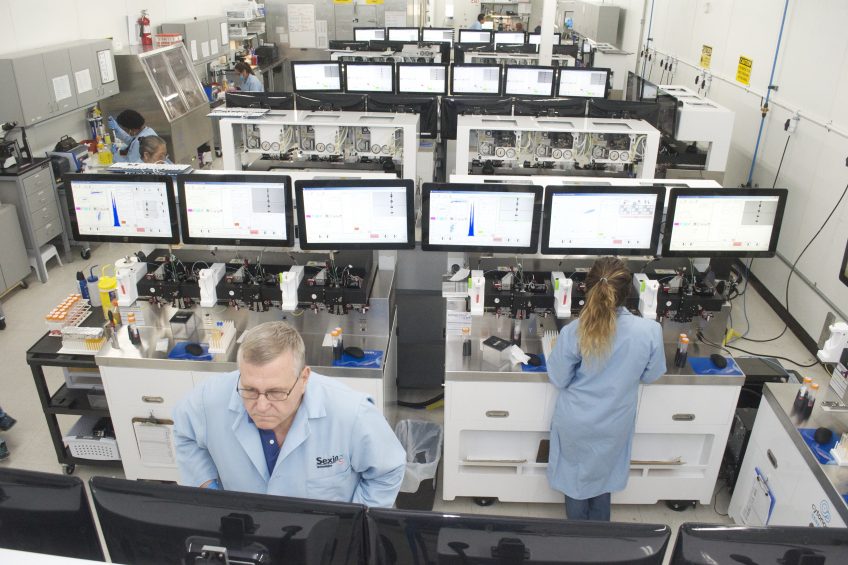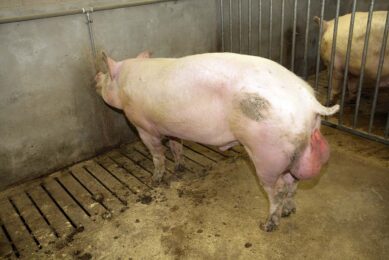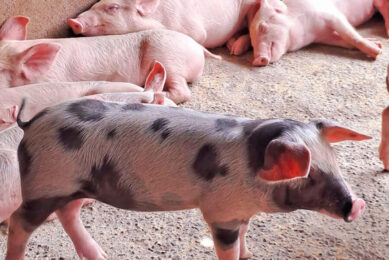Producing sex-sorted sperm with 99% accuracy

Ask a pig producer about what he or she doesn’t like and often ‘castration’ is mentioned. A novel concept from the United States may make castration practices a thing of the past. Genetic technology will soon enable the birth of female-only pigs.
When high-accuracy sex-sorted sperm becomes available to the global pig industry, the benefits realised by both commercial swine producers and genetics companies will be substantial.
This is the view of Dr Jon Meadus, among many others. Meadus is a research scientist at the Agriculture and Agri-food Canada Lacombe Research Centre in Lacombe, AB, Canada.
“The cost of artificial insemination (AI) is currently nominal,” he says, “but if [sex-sorted sperm] technology can guarantee a 95% or higher rate of sex-sorting, those doing AI routinely would adopt this tech – as long as it’s affordable. It would also enable the industry to avoid the animal welfare issues related to castration.”
Raising only female pigs saves on costs
Jay Willis agrees. “In terms of the speed of genetic selection, I would think that genetic companies and multipliers would be very happy to have this technology,” says the manager at the Swine Research and Technology Centre at the University of Alberta.
“It will increase the number of animals you can choose from and reduce production of animals you don’t need. There are so many opportunities for savings. On a commercial side, obviously how much this sorting would cost is a huge factor, but there are savings involved in its use, for example efficiencies in the finishing barn with just raising females, eliminating split-sex feeding and so on. And to not have to do castration means an invasive, painful procedure is gone, and right now we have very few tools to meet Code of Practice standards [in Canada].”
Will make castration a thing of the past
In Europe, the pig industry is also struggling with how to replace castration. The practice is still widely used, despite the industry’s own voluntary deadline for elimination about nine months away (January 1, 2018). A branch of the European Commission recently completed a study on castration, which states that “prior to the ending of this widespread traditional practice in pig husbandry, a lot of potential problems need to be addressed.”
Also interesting: EU: Castration without anaesthesia still common
Will the process damage the sperm?
Returning to high-accuracy sex-sorted sperm technology, whilst Dr Michael Dyck (professor in the department of Agricultural, Life and Environmental Sciences at the University of Alberta) agrees that there are many potential benefits to be had, he wonders if the tech is fast enough to be feasible, and how much increasing the speed will translate into higher cost. He also asks, “How is it going with preventing damage to the sperm that can occur during this process?”
Answers to these questions can be obtained at the developer, Sexing Technologies of Navasota, TX, United States.
Previous technology on sperm sorting
Dr Gregg BeVier, Sexing Technologies’ COO, notes that separation of sperm based on differences in DNA content of the X and Y chromosomes – the type of separation, which his company’s tech employs – dates back to the 1970s.
There have also been other methods developed over the last few decades to try and skew sperm gender ratios, including centrifugation and various bead technologies.
- Ovasort, for example, a company of the University of Bristol, UK, has developed technology to sort sperm based on detection of surface proteins.
- It was in 1989 that Dr Larry Johnson and colleagues at United States Department of Agriculture ‘Agriculture Research Service’ (USDA-ARS) in Beltsville, MD, United States, created a new method of sex-based sperm separation based on the amount of DNA it contains. It was called Beltsville Sperm Sexing Technology and achieved about 90% success across many types of livestock. “Later, the technology was patented by USDA-ARS and licensed to Colorado State University and Colorado State University Research Foundation,” explains BeVier.
“In 1996, these parties created a company called XY Inc. and in 2005, Sexing Technologies acquired it. Juan Moreno, Sexing Technologies’ CEO, took this proven process, refined it and then scaled it to make it commercially viable.”
To do so, Sexing Technologies made more strategic acquisitions and also invested heavily in cell sorting, sperm media and low dose insemination techniques.
Cattle as starting point
BeVier says whilst the process to sort sperm based on DNA content is similar for all species, cattle was a natural place for Sexing Technologies to start because cattle reproduction was already part of its portfolio. “In addition, cattle artificial insemination uses low cell numbers compared to many species,” he adds, “and since post-cervical insemination is the common way to breed a cow, therefore cattle were therefore also a logical start.”
Prior to Sexing Technologies’ refinement of its technique, BeVier says progress with improving sorting of cattle sperm was gradual. “From 1990 to 1995, sort speeds were slow, achieving 83% gender purity and 70% of conventional fertility,” he says.
“In 1996 to 2002, sort speeds improved by 400%, achieving 80-85% of conventional fertility. From 2003 to 2012, sort speeds improved by another 100%.” By 2015, fertility rates with Sexing Technologies’ method were equivalent to that of conventional AI, and due to advancements in cell-sorting speed and the addition of multiple sorter heads per sorting machine, Sexing Technologies now provides the cattle industry with up to 99% gender-biased semen.
Swine sperm
To introduce sex-sorted sperm to the swine industry, in 2015 Sexing Technologies purchased Fast Genetics in Saskatoon, SK, Canada. BeVier explains that the introduction of sex-sorted sperm in the swine industry required new media, extenders and the use of low-dose insemination. He notes that advancements with all this by Sexing Technologies and Fast Genetics were critical to the effort.
“While there is still work to be done to commercialise sex-sorted sperm,” BeVier says, “we are implementing the technique at our own nucleus and multiplier farms right now and will be starting to work with our multiplication partners in the next few months.”
Fast Genetics has multiple sorting facilities in North America, and does not wish to disclose at this time when the tech will be available at other facilities and where those facilities may be located, but does state that its current focus is on its key markets of Canada and the US.
Regarding prevention of damage to sperm at the start of the process (during sperm orientation), the company states that its sorting technology is highly accurate and well proven, allowing for 99% accuracy in sorting combined with industry-acceptable fecundity.
Specific profit gains
There are specific profit gains that can be had through being able to produce only the gender of pig desired (elimination of castration, no need to eliminate smell issues from intact males, production efficiencies). BeVier says that in a multiplication setting, a farm could theoretically double output of the desired product, and in a commercial setting, it’s expected that a profit gain of CAN$ 6-9 (US$ 5-7) per market hog will be achieved, depending on the sex of pig, the environment and the country in question. He adds that worker safety can also be better managed if a farm has the option of only raising one sex of pig.
BeVier sees having successful sex-sorted sperm available to industry as fulfilling a long-desired dream. “For years the pig industry has imagined having the ability to skew gender,” he says. “Now we don’t have to imagine it anymore.”
Join 18,000+ subscribers
Subscribe to our newsletter to stay updated about all the need-to-know content in the pigsector, three times a week. Beheer
Beheer










 WP Admin
WP Admin  Bewerk bericht
Bewerk bericht